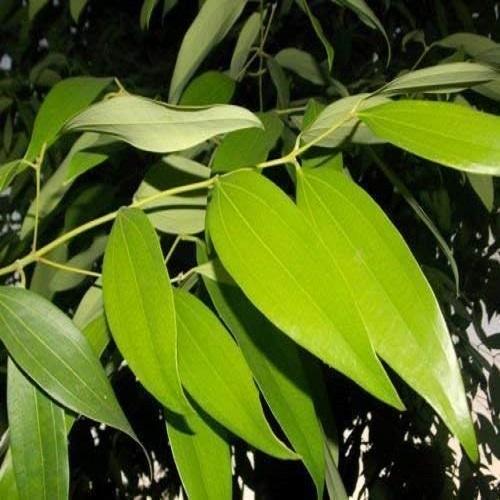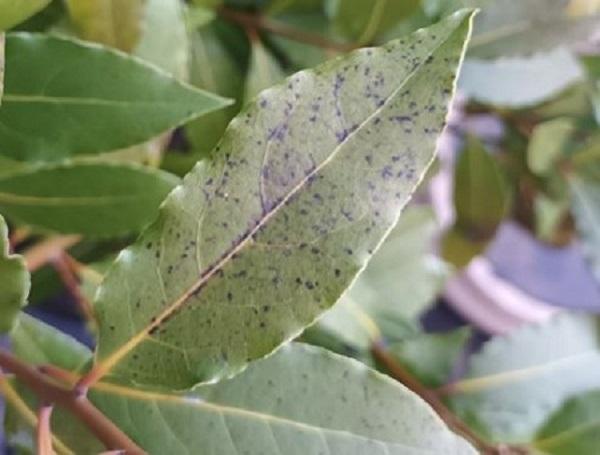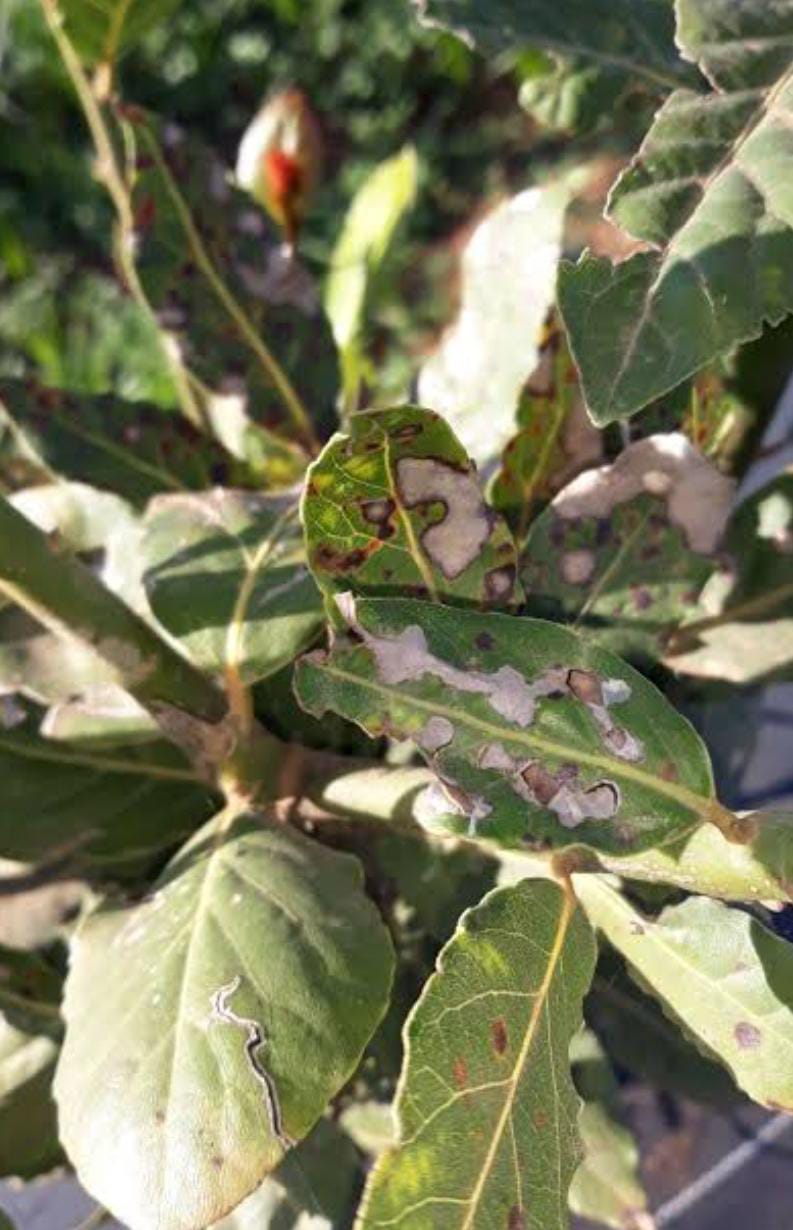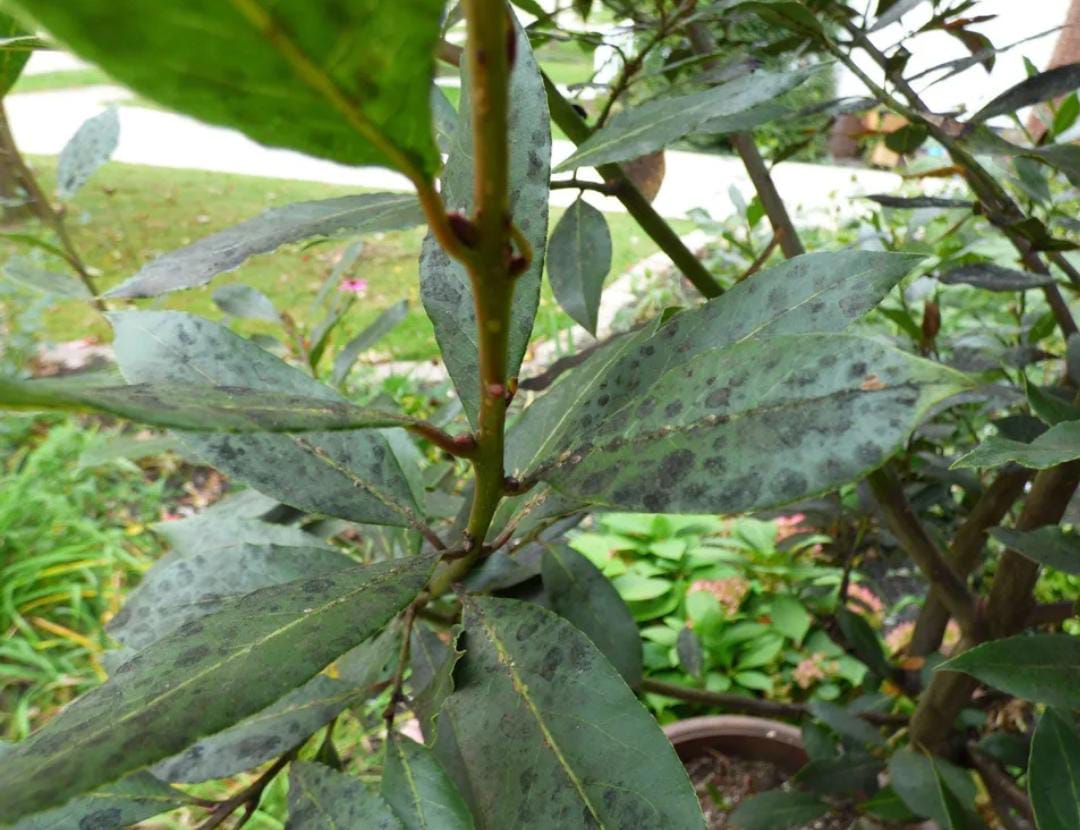Bay Leaf Plant
BIRYANI LEAF, also known as Indian Bay Leaf, is a fragrant herb. It thrives in well-draining soil and full sun exposure. Water consistently and prune to shape the plant. Harvest leaves for culinary use. Fertilize during the growing season for optimal leaf production.

Habit
Shrub
Height
2-5 m
Growth
Moderate
Soil
Well-drained loamy soil
Shade
Full Sun
Moisture
Moist
Edible
Yes [Leaves]
Medicinal
Yes
Origin
Mediterranean
Climatic Condition
Subtropical
Temperature (°)
15-25°C
Humidity (%)
50-70%
Potting media
Garden soil
Fertilizers
Balanced NPK
Watering
Moderate watering; allow soil to dry between waterings
Plant Weight
5-10 kg
Flowering Time
Spring
Soil Ph level
6.0 - 7.5
Water Ph level
6.0 - 7.0
Soil EC
Medium
Yield Per Plant
10-600 leaves per year
NPK ratio
10:10:10
life Span
Perennial
Health Benefits
Used in cooking; aids digestion and has anti-inflammatory properties.
Suggested Grow Media or Potting Mix ?
50% loamy soil, 30% compost, 20% sand
Suggested Fertigation/Fertilizers
Fertilize every 4 weeks with a balanced fertilizer.
Common Diseases and Remedies
Dieback, anthracnose, leaf spot.
Drying and wilting of leaves. White spots surrounded by brown border.
Neem cake, neem oil, NSKE.
HEALTH BENEFITS
Bay leaves are aromatic leaves commonly used in cooking and traditional medicine due to their rich nutrient profile and medicinal properties.
1. Rich in Antioxidants & Anti-Inflammatory Compounds
- Contains polyphenols, flavonoids, and essential oils that reduce oxidative stress.
- Helps fight inflammation and may relieve conditions like arthritis.
2. Supports Digestive Health
- Stimulates digestive enzymes, improving digestion.
- Helps relieve bloating, gas, and indigestion.
- Acts as a mild diuretic, reducing water retention and detoxifying the body.
3. Helps Regulate Blood Sugar (Good for Diabetes)
- May improve insulin sensitivity, helping control blood sugar levels.
- Studies suggest bay leaves may reduce blood glucose in people with diabetes.
4. Boosts Heart Health
- Rich in potassium, magnesium, and antioxidants, which help maintain healthy blood pressure.
- Reduces bad cholesterol (LDL) and promotes good cholesterol (HDL) levels.
5. Strengthens the Immune System
- Contains vitamin C, zinc, and antimicrobial properties that help fight infections.
- Used in herbal remedies to treat colds, flu, and respiratory issues.
6. Supports Respiratory Health
- Bay leaf tea or steam inhalation can clear mucus, relieve congestion, and ease coughs.
Its anti-inflammatory properties help with bronchitis and asthma
What Is Bay Leaf Plant?
The bay leaf plant, also known as Laurus nobilis, is an aromatic evergreen shrub native to the Mediterranean region. It belongs to the Lauraceae family and is prized for its fragrant leaves, which are used as a culinary herb. Bay leaves have a subtle, slightly floral flavor and are commonly used to add depth and complexity to soups, stews, sauces, and braises. In addition to its culinary uses, the bay leaf plant is also valued for its ornamental qualities, with glossy green foliage and a dense, bushy growth habit.
What Are The Different Types Of Bay Leaf ?
1. California Bay Laurel (Umbellularia californica):
Also known as California bay, Oregon myrtle, or pepperwood, this plant is native to the western United States. Its leaves have a strong, spicy fragrance and are sometimes used as a substitute for true bay leaves in cooking, though they have a more potent flavor.
2. Indian Bay Leaf (Cinnamomum tamala):
Native to India and neighboring countries, Indian bay leaf is another species in the Lauraceae family. Its leaves have a similar appearance to true bay leaves but with a more pungent flavor reminiscent of cinnamon and cloves. Indian bay leaves are commonly used in Indian and Southeast Asian cuisines.
How To Care Bay leaf Plant?
Location
The best location to plant a bay leaf plant (Laurus nobilis) depends on several factors, including climate, sunlight, soil conditions, and space availability.
1. *Climate*: Bay leaf plants thrive in Mediterranean climates with mild winters and warm, dry summers. They are not frost-tolerant, so if you live in a colder climate, consider planting bay leaf in a container that can be brought indoors during the winter months.
2. *Sunlight*: Bay leaf plants prefer full to partial sunlight. Choose a location in your garden or on your balcony that receives at least 6-8 hours of direct sunlight per day. Avoid planting in areas with excessive shade, as this can result in leggy growth and reduced leaf production.
3. *Soil*: Bay leaf plants prefer well-draining soil that is rich in organic matter. A loamy or sandy soil with good drainage is ideal. If your soil is heavy clay or tends to retain water, consider amending it with compost or planting bay leaf in a raised bed or container filled with well-draining potting mix.
Sun light
Bay leaf plants thrive in full to partial sunlight. They require at least 6-8 hours of direct sunlight per day to grow vigorously and produce abundant leaves. However, they can tolerate partial shade, especially in hot climates where some protection from intense afternoon sun can be beneficial. If you're growing bay leaf indoors, place it near a south-facing window where it can receive plenty of sunlight throughout the day.
Soil
Bay leaf plants prefer well-draining soil that is rich in organic matter. A loamy or sandy soil with good drainage is ideal for bay leaf cultivation. It's essential to avoid heavy clay soils that may retain too much water, leading to root rot and other problems. Additionally, amending the soil with compost or organic matter before planting can help improve its texture and fertility, providing the bay leaf plant with the nutrients it needs to thrive. If planting bay leaf in containers, use a high-quality potting mix designed for herbs or Mediterranean plants, which typically provides excellent drainage and aeration for healthy root growth.
Hydration
Bay leaf plants require moderate watering, keeping the soil evenly moist but not waterlogged. Water deeply once or twice a week, adjusting based on weather and soil conditions. Avoid overwatering to prevent root rot.
Nourishment
Bay leaf plants require nitrogen, phosphorus, and potassium, along with secondary nutrients like calcium and magnesium, for healthy growth and leaf production. Additionally, micronutrients such as iron, manganese, zinc, and copper are also essential for optimal development.
Issues
1. *Pests*: Bay leaf plants can be affected by pests such as scale insects, aphids, mealybugs, and spider mites. These pests can cause damage to the leaves and stems, leading to discoloration, wilting, and stunted growth.
2. *Diseases*: Bay leaf plants are susceptible to fungal diseases such as powdery mildew, downy mildew, and root rot. Overwatering, poor air circulation, and high humidity can contribute to the development of these diseases.
3. *Nutrient Deficiencies*: Bay leaf plants may exhibit signs of nutrient deficiencies if they lack essential nutrients like nitrogen, phosphorus, potassium, or micronutrients. Symptoms may include yellowing leaves, stunted growth, and poor leaf production.
4. *Environmental Stress*: Bay leaf plants can suffer from environmental stressors such as extreme temperatures, drought, or waterlogging. These stressors can cause wilting, leaf curling, and leaf drop.
5. *Root Rot*: Overwatering or poorly drained soil can lead to root rot, a fungal disease that affects the roots of bay leaf plants. Symptoms include yellowing or browning of the leaves, wilting, and stunted growth.
6. *Sunburn*: Bay leaf plants can experience sunburn if exposed to intense sunlight, especially during hot summer months. Symptoms include brown or scorched patches on the leaves.
What Are The Benefits Of Bay leaf?
Here are some benefits of growing bay leaf plants:
1. Culinary Use: Bay leaves add flavor and aroma to a variety of dishes, including soups, stews, sauces, and marinades.
2. Ornamental Value: Bay leaf plants have glossy green foliage and can be grown as attractive ornamental shrubs or small trees.
3. Aromatic Properties: Bay leaf plants emit a pleasant fragrance that can freshen the air in your home or garden.
4. Medicinal Uses: Bay leaves have been used in traditional medicine for their potential health benefits, including digestive support and stress relief.
5. Insect Repellent: The fragrance of bay leaves may help repel certain insects, making them a natural pest deterrent in your garden or home.
FAQ’s About Growing Bay Leaf
1. How much sunlight does a bay leaf plant need?
Bay leaf plants prefer full to partial sunlight and require at least 6-8 hours of direct sunlight per day.
2. What type of soil is best for bay leaf plants?
Bay leaf plants prefer well-draining soil that is rich in organic matter. A loamy or sandy soil with good drainage is ideal.
3. How often should I water my bay leaf plant?
Water bay leaf plants regularly to keep the soil evenly moist, but not waterlogged. Depending on the weather and soil conditions, this may mean watering once or twice a week.
4. Can I grow bay leaf plants indoors?
Yes, bay leaf plants can be grown indoors in containers placed near a sunny window. Ensure proper drainage and provide adequate sunlight for indoor bay leaf plants.
5. How do I propagate bay leaf plants?
Bay leaf plants can be propagated from stem cuttings or seeds. Stem cuttings taken from a healthy bay leaf plant can be rooted in water or soil to produce new plants.



